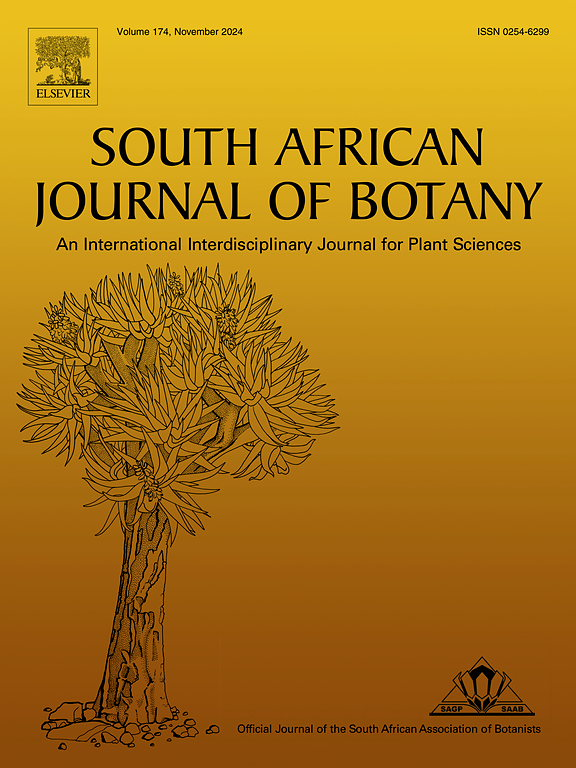Unlocking hidden biomarkers: Exploring miswak (Salvadora persica L.) potential in tongue squamous cell carcinoma through UPLC-MS/MS and multivariate analysis
IF 2.7
3区 生物学
Q2 PLANT SCIENCES
引用次数: 0
Abstract
Salvadora persica L. (Miswak) popularly utilized in oral hygiene serves as an appreciated prime store of chemically distinct bioactive compounds with potentiating biological attributes. The current work is devoted to thoroughly compare the chemical profiles of S. persica different organs (leaves, roots and twigs) and their potential entanglements on oral cancer control through Ultra-performance liquid chromatography-mass/mass spectrometry (UPLC-MS/MS) and chemometrics. A set of 64 compounds belonging to distinct chemical classes mainly phenolics, benzyl and urea derivatives, butanediamides, terpenoids, and fatty acids were chemically annotated unravelling dynamic patterns among miswak parts. Coincidentally, Orthogonal Projection to Latent Structures-Discriminant Analysis (OPLS-DA) successfully optimized the intricate discrepancies among the comparable organs underscoring benzylcarbamide, kaempferol-O-hexoside, catechin, benzylnitrile, and N-(1-hydroxybenzyl) urea as focal markers of leave samples whilst theogallin, isoterpinolene, N, N’-di(hydroxybenzyl)urea, iriflopheneone, viridiflorol, reticuline and persicaline obviously distinguished root samples. Successively, benzylisothiocyanate, N,N’-dibenzylthiourea, carnosic acid, N,N’-dihydroxybenzyl-butanediamide and oleic acid were the differential markers for twigs. Experimentally speaking, the tested miswak organs effectively attenuated the proliferation of tongue carcinoma in a dose and time-dependent manner with the most noteworthy findings in the case of root samples with IC50 equal 90.12 ± 2.4 μg/mL. Orthogonal Projection to Latent Structures (OPLS)-derived coefficients plots illuminated that benzylcarbamide, benzyl nitrile, syringic acid, catechin, N-(1-hydroxybenzyl)-urea, salvadorin and dehydroursolic acid lactone strikingly accumulated in roots might be the efficacy compounds beyond the oral cytotoxic activity. The data gathered undoubtfully provide a basic step for rational inclusion of S. persica as a valuable starting material for new drug discovery to rectify oral cancer. However, future research should be geared to strengthen the relevance.

求助全文
约1分钟内获得全文
求助全文
来源期刊

South African Journal of Botany
生物-植物科学
CiteScore
5.20
自引率
9.70%
发文量
709
审稿时长
61 days
期刊介绍:
The South African Journal of Botany publishes original papers that deal with the classification, biodiversity, morphology, physiology, molecular biology, ecology, biotechnology, ethnobotany and other botanically related aspects of species that are of importance to southern Africa. Manuscripts dealing with significant new findings on other species of the world and general botanical principles will also be considered and are encouraged.
 求助内容:
求助内容: 应助结果提醒方式:
应助结果提醒方式:


